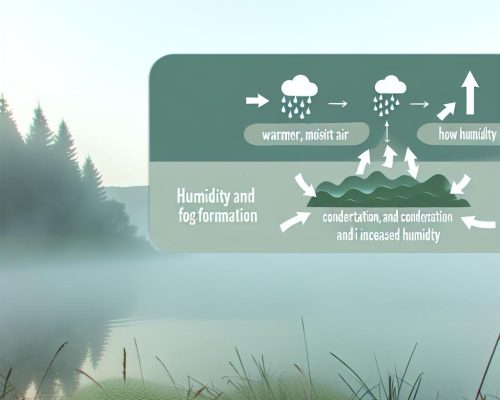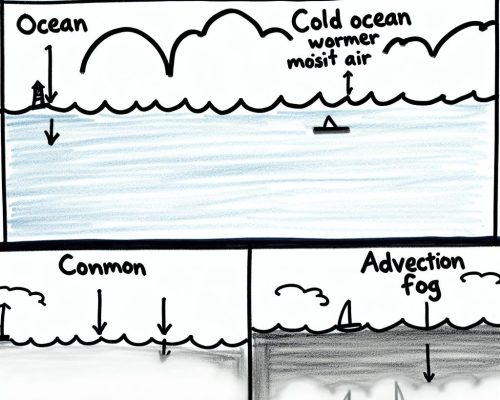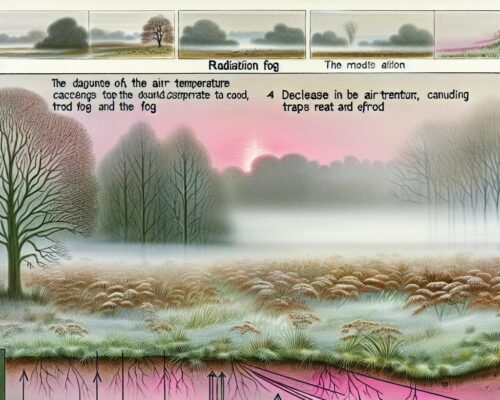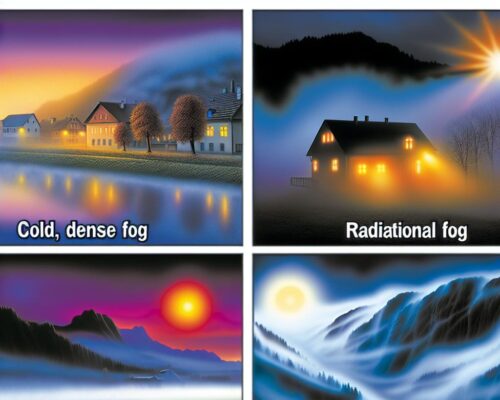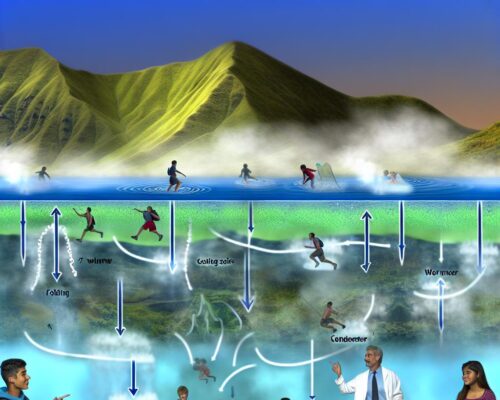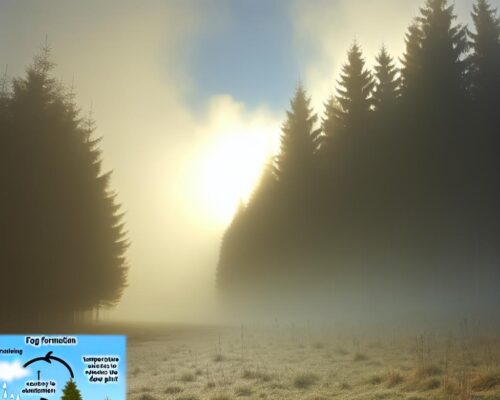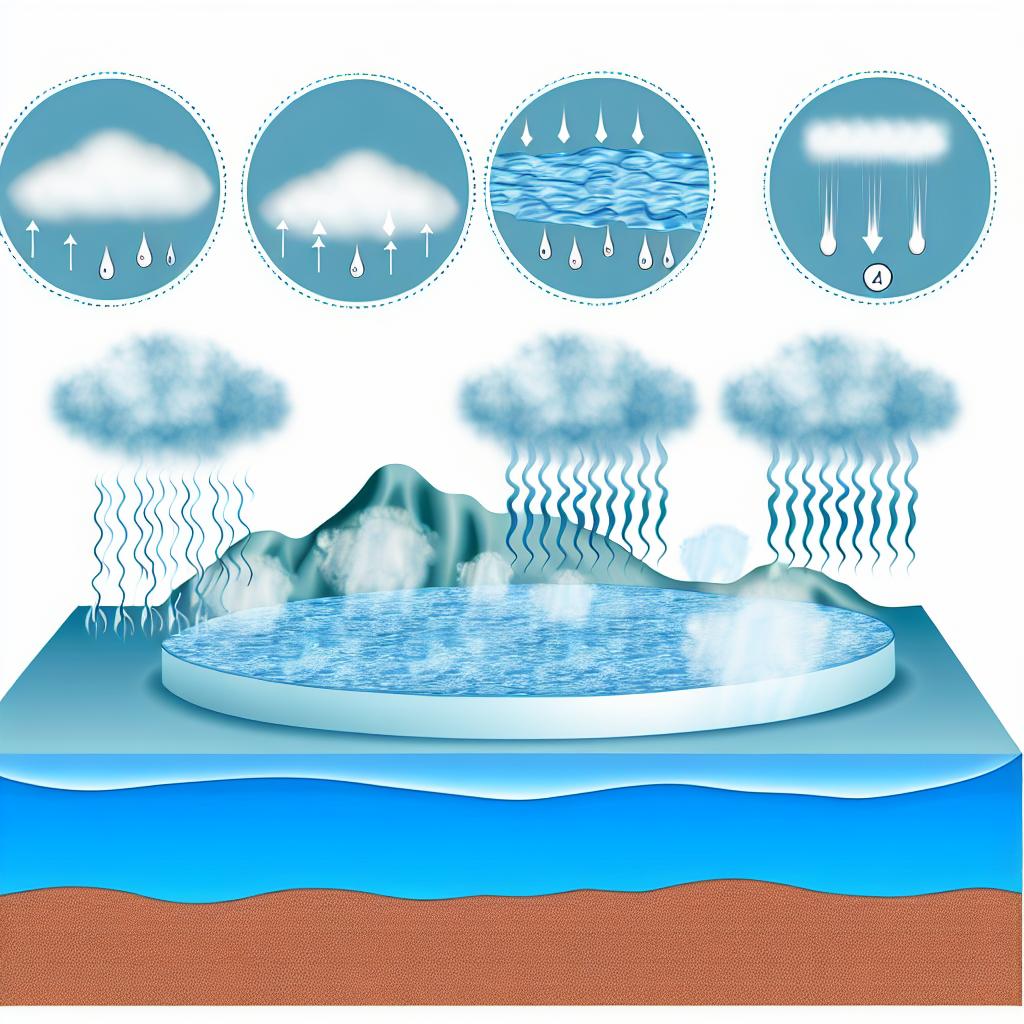
How Evaporation Fog Forms Over Water
Understanding Evaporation Fog Formation
Evaporation fog is an intriguing natural phenomenon that often occurs over bodies of water. Under specific conditions, it can create beautiful and mysterious scenes of mist hovering over the surface. To delve into how evaporation fog forms, it is important to understand the interplay between air temperature, water temperature, and humidity.
Temperature and Humidity Dynamics
Evaporation fog is primarily a result of the interaction between warm water surfaces and cooler air. When water temperatures are substantially higher than the air hovering above, water molecules begin to evaporate more rapidly. As these water vapor molecules rise, they mix with the cooler air, where they quickly condense, forming fog.
For instance, during the transitional period from late fall to early winter, the surface temperature of a lake might be warmer compared to the chilly air in the early morning. The warmer water facilitates evaporation, while the cold air allows the vapor to cool and condense into fog droplets. This process often results in a misty layer, commonly referred to as evaporation fog, which is more prevalent in the early morning hours or after the sun sets.
The Role of Saturation
Evaporation fog forms swiftly when the air directly above the water becomes saturated. Saturation occurs when the air holds the maximum amount of water vapor it can contain at a given temperature and pressure. The interaction between warm evaporated moisture and cooler atmospheres drives this saturation process.
Latent Heat Exchange
Another critical element is the latent heat exchange. When water vapor evaporates, it absorbs heat from the surrounding environment, a process known as an endothermic reaction. As the vapor condenses into fog droplets, this heat is released back into the atmosphere, helping to sustain the fog formation.
Visual and Practical Implications
Evaporation fog is often a temporary atmospheric feature, dispersing as temperatures equalize or as sunlight warms the air. However, during its occurrence, it can significantly impact visibility, presenting challenges for navigation in water transport. For more details on fog types and weather phenomena, you might explore additional resources such as specialized meteorological sites or environmental research institutions.
This captivating process serves as a reminder of the dynamic interplay between various atmospheric conditions, showcasing the complex systems at work in our natural environment.
Factors Influencing Evaporation Fog Formation
Geographical Features: The formation of evaporation fog is heavily influenced by the geographical features of a location. For instance, larger water bodies with extensive surface areas will potentially create more opportunities for evaporation and subsequent fog formation. This is especially true in regions where there’s a noticeable temperature difference between the water surface and ambient air.
Seasonal Influences: Seasonal changes also play a critical role. As seasons transition, especially from warmer to cooler months, the temperature contrast between the water and air becomes more pronounced, which enhances the likelihood of fog formation. Autumn and spring are particularly active periods for evaporation fog due to these marked temperature changes.
Broader Environmental Impacts
While evaporation fog is a visually appealing phenomenon, it also holds broader environmental implications. It can act as an atmospheric insulator, temporarily trapping heat close to the surface and impacting local weather conditions. Additionally, in some ecosystems, evaporation fog can contribute to the moisture levels in surrounding vegetation, subtly influencing plant growth and soil moisture.
Scientific Significance
From a scientific perspective, studying evaporation fog provides valuable insights into atmospheric processes. It allows scientists to examine microscale weather patterns and understand how minor changes in temperature or humidity can exert significant effects on fog formation. Through such studies, researchers can enhance weather prediction models, improving their accuracy in forecasting similar phenomena.
Integration in Forecasting Models
Incorporating evaporation fog understanding into meteorological models is essential for accurate weather predictions. By analyzing temperature gradients and humidity levels, meteorologists can project fog formation with higher precision, aiding in agriculture, transportation, and urban planning, where visibility factors are crucial.
Practical Considerations
Practical applications of evaporation fog studies include developing better navigation systems for maritime and air travel, where fog-induced low visibility can pose significant safety risks. Enhanced prediction capabilities help mitigate such risks, ensuring smoother and safer operations.
Technological Applications of Fog Understanding
The study of fog is not confined to its environmental impact alone. Technological advancements benefit from insights into fog formation. In automated vehicle technology, understanding visibility changes due to fog helps in the development of sensors and systems capable of operating under such conditions. This is especially critical for regions where fog is a frequent occurrence.
Innovations in Sensor Technology
The need for improved visibility in foggy conditions drives innovation in sensor technology. Advanced sensors capable of detecting and responding to humidity and temperature changes have been developed, enhancing the capability of vehicles to operate safely during fog events. These innovations are applicable across various industries, from transportation to meteorology, enhancing safety and operational efficiency.
Impact on Climate Studies
Climate researchers study fog to understand broader climate system impacts. By examining fog patterns over time, scientists can infer changes in regional climate conditions, as fog presence can indicate shifts in temperature and humidity levels. Such studies contribute to holistic climate data, essential for understanding long-term environmental changes.
Fog as a Natural Laboratory
Fog serves as a natural laboratory for atmospheric scientists. By observing fog development, researchers gain insights into cloud microphysics, atmospheric chemistry, and the interactions between atmospheric particles. These investigations delve into how fog droplets form and persist, advancing knowledge in cloud dynamics and atmospheric behavior.
Conclusion
The phenomenon of evaporation fog extends beyond its aesthetic appeal, influencing environmental conditions, scientific research, and technological advancements. Understanding its formation and effects provides insights into atmospheric dynamics and assists in practical applications ranging from weather forecasting to technological development. The detailed study of such an everyday yet complex phenomenon underscores the intricacies of our natural world, emphasizing the importance of continued exploration and understanding of atmospheric processes.

